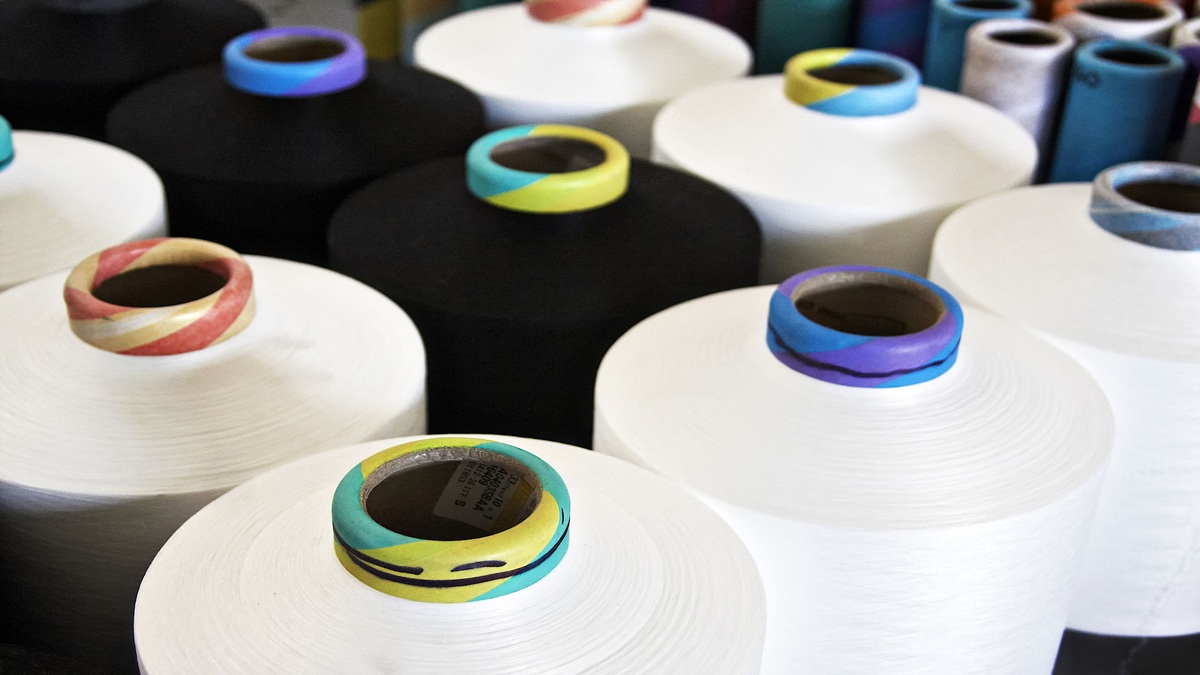The trade war and the epidemic have impacted the global economy. No country can stay aside. As the world's top three exporters of machine tools, Japan is also facing the dilemma of a simultaneous decline in export and domestic demand! Although the orders from China in June ended Japan’s 27 consecutive months of negative growth over the same period, the machine tool industry’s demand for face-to-face with customers and delivery of machine installations has stagnated because the restrictions on movement have not been lifted, and the original production plan in the case of delay or contraction, all localities remain cautious about investment. Facing the impact of the epidemic, Japan’s Ministry of Economy, Trade, and Industry have also offered relief measures for manufacturers, including rent, working capital, preferential loans, and trade insurance, to avoid large-scale corporate failures in the country, and encourage Japanese companies to increase capital investment. Maintain the momentum of economic growth.
Japan machine tools have already faced the dilemma of simultaneous decline in the export and domestic markets before the impact of the epidemic
Looking back at the year of 2019, Japan's machine tool orders decreased by 32.3% compared with the same period in 2018, to 1.2 trillion yen. In terms of order share, Japan’s domestic demand decreased by 34.3% from the same period last year to 493.2 billion yen, while external demand fell by 29.9% to 736.7 billion yen.
The contraction of the domestic demand market mainly comes from the automotive and electrical and precision machinery industries, especially when the automotive sector has been affected by the downturn in the automotive market. Coupled with the consumption tax on the road in October, the sales of new cars in Japan have begun to decline, which has also affected the use of Japanese machine tools in automobiles. The industry’s domestic orders in the second half of the year only reached 50% of the same period in 2018, and the annual order value was 139.8 billion yen; the total order of electrical and precision machinery was 43 billion yen, which is different from the increase in 2017-2018. The annual growth rate decreased by 42.7%.
The decline in the export regions is due to the continued influence of the US-China trade war. The first is that China's metal processing industry tends to be conservative in its investment demand for machine tools, such as the situation where "profits will change due to tariffs" for automotive parts and components bear the brunt. Orders in 2018 were 285 billion-yen, accounting for 26.8% of Japan’s overall export sales. By 2019, the China market’s external sales fell by 42.7% to only 163.4 billion yen, which also accounted for 22.2%.
The epidemic hits the market of Japan machine tool industry
Affected by the epidemic, Japan machine tool orders in the first half of 2020 have declined by about 40% compared with the same period in 2019. The main reason is that while the automotive industry reduces equipment investment, it converts funds into the digital investment to cope with the epidemic and enhance competitiveness. This situation may continue until after the epidemic is over, the equipment investment in the manufacturing industry will take longer or there will be new end products to restore the original level.
Fortunately, orders from China in June ended 27 months of negative growth over the same period. Although they are still uneven, some auto factories have resumed full production and are in a busy state. China's policies in various local governments to stimulate consumption have allowed China's domestic new car sales to return to positive growth in the second quarter. The demand for medical and epidemic prevention and 5G infrastructure is also a great help. Although the economic activities in Japan, Europe, and the United States have restarted, the machine tool industry’s needs for face-to-face with customers, handover, and installation, have stagnated because the movement restrictions have not been lifted, and the original production plan has been delayed or tightened, investment remains cautious.
Analysis of the export value and product categories of Japan machine tools
Japan is one of the world's main exporters of machine tools. Japan ranked the world's largest exporter of machine tools in 2014, but its export value began to decline in 2015 and retreated to the world's second-largest exporter in 2016.
Japan’s export value and annual growth rate of machine tools in the past five years have shown a downward trend since 2015. The export value was US$9,637 million, a sharp decrease of 19.8% compared to 2014. The export value in 2016 was only US$8,020 million. Japan's machine tool exports in the past ten years saw the least amount of exports, after which it showed a trend of alternating growth and decline. In 2017, there was a slight growth of 9.2%, and the export value was US$8,832 million. In 2018, the export value continued to grow by 10.6% to reach US$9,876 million. In 2019, exports to the China market fell sharply by 32.6%, resulting in a 14% decline in overall export value. The export value is only 8,667 million US dollars.
In 2019, Japan’s top five countries for exporting machine tools were China, the United States, India, Thailand, and South Korea. The export proportions were 22.1%, 22.0%, 7.5%, 5.7%, and 5.2%, respectively. Less than 5%. In recent years, the export of Japanese machine tools to India has grown year by year. In 2018, it surpassed South Korea and Thailand as the third-largest exporter. In 2019, the export value was 650 million U.S. dollars, with a share of 7.5%. Thailand is the fourth largest exporter of Japanese machine tools in 2019. The export value fell to 384.2 million U.S. dollars in 2016 and has rebounded year by year since 2015. In 2019, the export value reached 495.8 million U.S. dollars, with a share of approximately 5.7%. South Korea has been one of Japan’s main export markets for machine tools in the past decade. In 2011, the export value reached the highest value of US$1,170.6 million, making it the third-largest export country that year. After 2014, the export value has shown a downward trend year by year. Retreated to the fifth largest exporting country.
In the first half of 2020, the proportion of the China market has significantly increased due to the impact of the epidemic. Under the severe situation in other regions, the global machine tool market has become more competitive. Observing the five-year compound growth rate of Japan machine tool export models from 2015 to 2019, it is found that the models with higher growth rates are other forming machine tools and planning, inserting, drawing, sawing, and gear cutting machines, while drilling machines and comprehensive processing machines It is showing negative growth.
In the first half of 2020, after the outbreak of the epidemic, tool mobility was mainly aimed at medical and remote zero-contact needs. The subsequent recovery in China will be driven by infrastructure such as 5G, and the follow-up will be aimed at the recovery of the auto industry. During this period, Japan exports Compared with the same period last year, the world's models showed growth only for electric discharge, laser, and ultrasonic machine tools. The remaining models all showed a decline of about 30% to 40%.
Marketing patterns and services of the Japan machine tool industry after the epidemic
After the outbreak, taking into account the high infectivity of the virus, to prevent the rapid spread of the epidemic, governments of various countries have also proposed epidemic prevention measures to avoid crowds. The Japan International Machine Tool Exhibition, which was originally scheduled to be held at the end of this year, also announced that it will be converted into an online exhibition. The newly launched machine tools and technologies will be presented to buyers all over the online. The benchmarking manufacturer DMG MORI also set up a Digital Twin Showroom for multinational buyers, allowing visitors to experience the environment through a 3D perspective, but the ultimate problem is how to provide remote sales services and ensure the safety of customers during operations.
The research institute proposed that the factory labor force may drop by at least 20% due to the uncertainty of the epidemic. It is speculated that in the future, to reduce personnel contact and reduce the knock-on effect of stoppages on supply chain disconnection, the development and introduction of high-level factory automation technology and remote-control assistance programs will be accelerated to reduce the risk of the economic impact caused by future stoppages.
-
Trend 1: Reduce actual production manpower and increase the proportion of factory automation
The intelligence of machine tools has always been an important goal for the global machine tool industry to upgrade and enhance competitiveness in recent years. Stand-alone intelligence with smart components and smart sensors allows the machine to have the capabilities of self-perception, precision compensation, automatic parameter adjustment, fault prediction, and maintenance reminders, which can help users find and eliminate machine processing problems in advance. If combined with the remote assistance function connected to the cloud, it can reduce the opportunity for personnel to operate and maintain on-site and increase the machine's utilization rate, processing efficiency, and output value.
Also, it will be a more obvious trend for machine tools to combine peripheral smart products and information management systems to form the entire line and the entire factory automation and maximize the overall production efficiency. For example, machine tools use robotic arms to load and unload materials, use automatic guided vehicles (AGV) and autonomous mobile robots (AMR) to transport raw materials and processed finished products, and then use 5G technology to improve data calculation and transmission efficiency, which not only reduces In the case of labor-intensive conditions, the handling efficiency is improved, the storage and handling of materials are automated, and the overall production efficiency is improved.
-
Trend 2: Reduce personnel contact and provide remote control assistance programs
For traditional manufacturing, many front-line operators, equipment maintenance personnel, and factory control personnel are required to stay in the factory for real-time monitoring and operation to maintain factory production capacity. However, after the outbreak of the global epidemic, the flexibility of employees to work has been restricted. To reduce the proportion of personnel gathering, the industry has gradually realized the importance of remote control and assistance programs. At present, some highly intelligent factories can remotely monitor the status of the factory and the processing screen of the machine through the network smart set-top box (SMB), the Internet of Things, and the cloud platform. The machine can be controlled through a mobile device or a remote combat situation room, and non-contact equipment remote operation and maintenance consultation can be carried out to further control the processing status, diagnose the health status of the machine, perform maintenance monitoring and troubleshooting, and greatly reduce the number of personnel to the factory the maintenance ratio and travel rate save more travel time and labor costs.
Machine tool transformation is imperative, the epidemic is just a catalyst
After the epidemic, the global machine tool market will move towards highly fragmented and fierce competition. Machine tool manufacturers from various countries will compete for the slow-growing share after 2021. The product portfolio of large benchmark manufacturers will cover a wide range of machine tool products, while smaller manufacturers will focus on niche markets and specifically meet the special needs of specific end users, forming a trend of universal use and niche polarization, and growing In the case of limited scope, most large-scale manufacturers are trying to increase market share through acquisitions, mergers, and the establishment of strategic alliances and partnerships, and create a situation of Evergrande.
Looking at the recovery of the manufacturing industry in the post-epidemic period, in the long run, in the case of slow sales and surge in competition, it is necessary to give priority to the stability of the supply chain of machine tools and their spare parts, the convenience of after-sales service, and the production capacity of flexible manufacturing. , More and more machine tool manufacturers connect suppliers and customers for research and development to survive in the market.
Slightly large-scale machine tool manufacturers will accelerate the establishment of marketing bases in emerging markets. In the application of machine tools in advanced industrial countries such as Japan and Germany, it is not only necessary to increase the value of the product itself, but also to start with related services. In addition to automated peripherals, the current development trend of the machine tool industry is to quickly deploy software applications for device tracking and diagnosis to reduce downtime and low utilization rates and to establish users and local service bases on the Internet. Agent’s troubleshooting teaching.
According to the advantages of different regions and processing needs, sales methods and after-sales service should be adopted according to local conditions. For Taiwan's machine tool industry, which is dominated by small and medium-sized enterprises, once the business model of remote maintenance or service consulting takes shape, it will make up for the dilemma of limited scale and unable to expand customer service.
The epidemic hits the machine tool orders
Japan government assists manufacturing industry to bailout
According to the data released by the Japan Work Machinery Industry Association, Japan’s order value in the first half of 2020 is only 60% of that of 2019. This shows that the machine tool industry alone has been affected by the epidemic, although from April to June 2020, due to Due to the slowdown of the epidemic in China, the order amount has rebounded slightly, it is still not as good as 2019. Not only the Japanese machine tool manufacturing industry, but most industries are affected by the epidemic. The Ministry of Economy, Trade, and Industry of Japan have also provided various subsidies to enterprises affected by the epidemic, and the manufacturing industry is no exception.
The government acts as the strongest backing for enterprises
According to the subsidy measures announced by the Ministry of Economy, Trade, and Industry in August 2020, this adjustment mainly subsidizes the rent paid by the manufacturing industry. Besides, it also subsidizes operating funds for various businesses and provides interest-free loans through financial institutions. The various relief measures provided by Japan for the manufacturing industry are aimed at helping the industry to tide over the difficulties. On the other hand, since the subsidy measures are to help the industry tide over the difficulties, large enterprises with relatively good physical conditions often exclude subsidies.
- First of all, the subsidy provided to all businesses is for a situation where sales are shrinking but equipment maintenance costs remain unchanged. Therefore, the subsidy program provides a maximum of 2 million yen for legal persons and a maximum of 1 million yen for individual businesses. The same applies to new businesses established from January to March. However, applicants for this subsidy must meet the following conditions: (1) The amount of capital is less than 1 billion yen; (2) The number of ordinary employees is less than 2,000; (3) The income has been obtained after 2019 and there is a plan to continue business; (4) Since January 2020, due to the epidemic, one month's operating income has fallen by more than 50% compared with the same period last year.
- Second, the rent subsidy is to cope with the decline in sales, rent or rent has become a burden for the continuous operation of the business. In this project, the Ministry of Economy, Trade, and Industry provide up to 1 million yen per month for legal persons and up to 500,000 yen per month for personal businesses. The rent subsidy in Japan's Yen is up to 6 months. Applicants for rent subsidies must also meet the relevant conditions: (1) The amount of capital has not reached 1 billion yen; (2) Since January 2020, due to the epidemic, there has been a one-month decrease in operating income compared with the same period last year. 50% or operating income for three consecutive months has fallen by more than 30% compared to the same period last year; (3) Payment of rents for land and buildings for business use.
- Third, provide interest-cut, interest-free, and unsecured loans for businesses that require temporary working capital due to declining sales. This plan raises the five-year loan limit of public and private financial institutions. The loans require no guarantee or interest. The existing loans can be discussed with financial institutions again to adjust loan conditions, and different conditional subsidies will be given to different sales declines.
- Fourth, provide financial institutions as capital. The Japanese government will provide financial institutions as capital loans during the epidemic through the Japan Public Treasury and CICC Bank of Commerce and Industry, and set up relevant loan quota and loan period adjustment policies.
- Fifth, due to the epidemic situation, businesses must temporarily require employees to take vacations. Businesses that have difficulty paying related allowances can apply to the government for employment adjustment allowances to cover related expenses.
- Sixth, provide relevant subsidies for businesses that are still investing in the capital while preventing epidemics and provide 100% subsidies for epidemic prevention costs within 500,000 yen to support enterprises' production.
Provide overseas investment, import and export trade insurance
In addition to providing individual subsidies for special industries such as manufacturing, for import and export traders, the Japan government also provides general trade insurance and overseas investment insurance through the 100%-owned Nippon Trade Insurance Co., Ltd., and launched "Responding to the Novel Coronavirus Epidemic" Provide consultations on various insurance procedures. The general trade insurance and overseas investment insurance provided by Japan Trade Insurance cover all losses due to the expansion of the new crown virus epidemic.
Establish a screening mechanism to ensure the maximum benefit of subsidy funds
In response to the impact of the new crown virus epidemic, the Ministry of Economy, Trade, and Industry of Japan have implemented various rescue plans for various industries in Japan. The policies related to manufacturing are as mentioned above. However, the subsidy provided by the Japan government in response to the epidemic requires a decline in sales. The application requirements are to eliminate the opportunity for large companies to apply for subsidies, and to invest the subsidies as much as possible into small and medium-sized enterprises and small-scale personal businesses. It can be seen that the Japan government's subsidy policy mainly assists domestic small and medium-sized enterprises. During the epidemic, through the period of stagnation in global economic activities, to avoid large-scale corporate failures in China, on the other hand, through subsidies for capital investment, Japanese companies are encouraged to increase capital investment to maintain economic growth momentum.






.jpg)
.jpg)

.jpg)

點-m-90454917_m.jpg)


